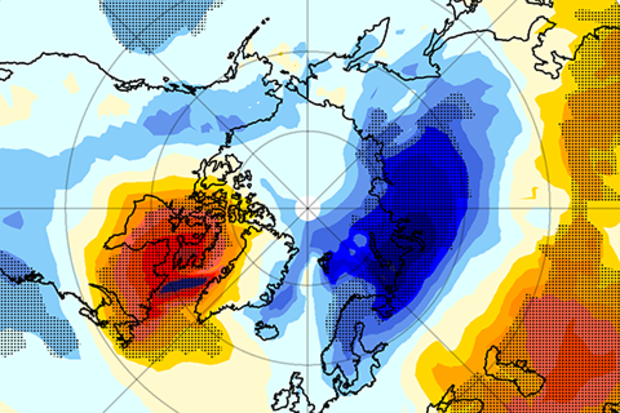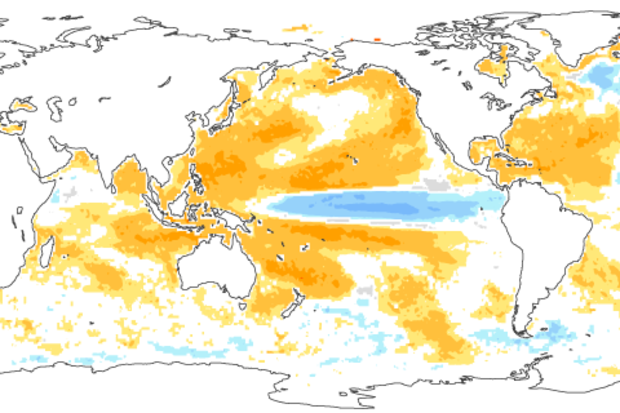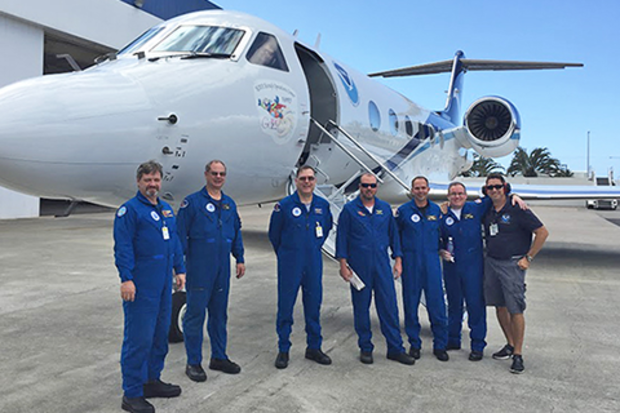ENSO Blog
There’s a 75% chance that La Niña will be in place by the fall, meaning sea surface temperatures in the central Pacific at the equator will be more than 0.5°C below average. It’s possible the transition from El Niño to La Niña will be quick, with forecasters slightly favoring La Niña developing this summer. What’s behind this reasonably confident forecast?
Current conditions
Sea surface temperatures in the Nino3.4 region, our primary index for ENSO (El Niño/Southern Oscillation), have been cooling steadily since they peaked at 2.4°C (4.3°F) above average back in November. Recently, cooling has accelerated, and April was 1.2°C above average using ERSSTv4, our most historically consisten…
Read article
This is a guest post by Dr. Amy Butler (@DrAHButler) who is a research scientist at the University of Colorado Cooperative Institute for Research in Environmental Sciences (CIRES) and sits within the NOAA Chemical Sciences Division (CSD). Her research focuses on large-scale climate patterns and phenomenon, such as the Arctic and Antarctic Oscillations and sudden stratospheric warmings.
“’Polar vortex’ set to strike the U.S. as snowstorm death toll rises” (Slate). “Polar vortex transforms Mid-Atlantic to Mid-Antarctic” (Washington Post). “Economic impact of ‘polar vortex’ could reach $5B” (CBS News). These are all real headlines from 2014 and 2015, when the phrase “polar vortex…
Read article
It will soon be time to bid good-bye to the strong El Niño of 2015-2016. Forecasters anticipate that sea surface temperatures in the Niño3.4 region will drop below the El Niño threshold (0.5°C above the long-term average) in the late spring or early summer. After more than a year of El Niño conditions, what’s next?
First, though—what’s now?
The average anomaly (departure from average) in the Niño3.4 region during March still reflected a strong El Niño, at 1.6°C in the ERSSTv4 dataset. However, this was a substantial drop from February’s 2.0°C, which is what we’d expect during the demise of an El Niño.
The atmosphere was still responding to those warmer-than-average El Niño surfa…
Read article
This is a guest post by Dr. Amy Solomon and Dr. Gil Compo of the NOAA Earth System Research Laboratory and the Cooperative Institute for Research in Environmental Sciences of the University of Colorado-Boulder. Both scientists sit within the Physical Sciences Division, which took on a leading role in the El Niño Rapid Response Campaign. They excel at improving our process-based understanding of the models and developing reanalysis datasets, which are critical to understanding and predicting weather and climate.
The ongoing El Niño of 2015-2016 is a historically strong event, the likes of which is only seen once or twice during a scientific career. Not wanting to let this opportunity pass…
Read article
The strong El Niño of 2015/16 is on the decline, and the CPC/IRI forecast says it’s likely that conditions will transition to neutral by early summer, with about a 50% chance of La Niña by the fall. In this post, we’ll take a look back at this past winter and forward to what may happen next.
Current events
El Niño has begun to weaken, with sea surface temperature anomalies across most of the equatorial Pacific decreasing over the past month. The large amount of warmer-than-average waters below the surface of the tropical Pacific (the “heat content”) also decreased sharply, despite getting a small boost in January. The heat content is the lowest it’s been in over a year, and since the s…
Read article




